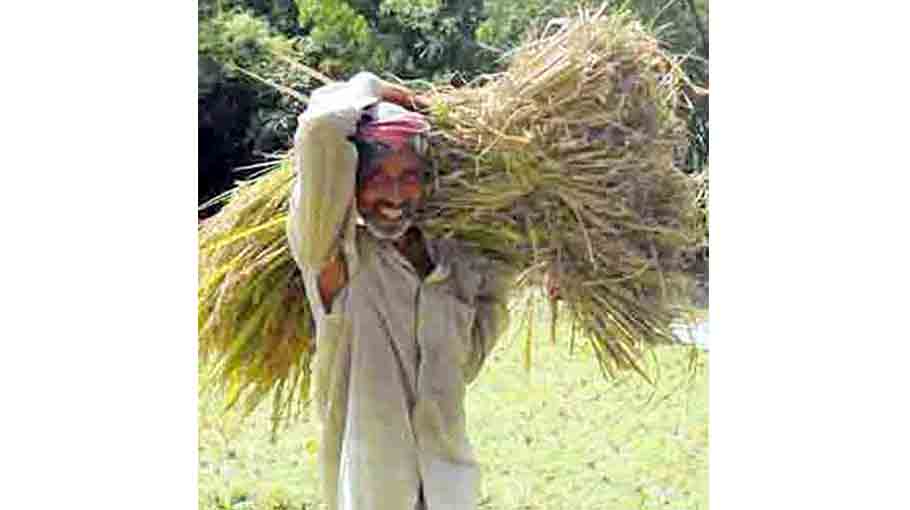Advance Aman cultivation solves food crunch in Rangpur

Harvesting of short term and early varieties of Aman paddy is going on in the northern region including Rangpur. Farmers are reaping this much awaited seasonal rice with joy. As a result, the seasonal scarcity of fall season has been removed in the farmers' houses of this region. At the beginning of the season, despite various adversities including adverse weather conditions, the farmers were relieved to some extent as they were able to harvest the pre-planted short-term Aman paddy in the fields. At a time when people are suffering from rising prices of all commodities, including rice, the short-term paddy advance is alleviating the food crisis.
At the end of every year in Rangpur region, the agricultural laborers here have nothing to do. The result is scarcity. In the local language it is called manga. During this time, needy people were forced to take loans at high interest rates along with selling household goods. Agricultural laborers move from one district to another in search of work.
Bangladesh Rice Research Institute and Bangladesh Paramanu Agricultural Research Institute have taken initiatives to eradicate the drought, locally called Manga, create employment and provide food security in Rangpur region through advance Aman rice cultivation system and crop diversification. Since 2004, the initiative has been implemented at the field level with public-private cooperation in the region with the aim of expanding early and short-term rice varieties that can be grown at home during the 'manga' season.
According to the Rangpur regional office of the Directorate of Agricultural Extension, during the current planting season, saplings were planted on six lakh 15 thousand 994 hectares of land in five districts of this region. This includes one lakh 66 thousand 640 hectares in Rangpur, one lakh 29 thousand 699 hectares in Gaibandha, one lakh 19 thousand 965 hectares in Kurigram, 86 thousand 558 hectares in Lalmonirhat and one lakh 13 thousand 105 hectares in Nilphamari. The production target of cultivated Aman rice has been set at 18 lakh 7 thousand 916 metric tons of rice. Sources also said that out of the total cultivated rice, short term and early varieties of rice have been cultivated in 90 thousand hectares of land. Which includes Bridhan-33, Bridhan-39, Bridhan-45, Bridhan-62 and Bina-7 varieties of rice. Which is now starting to rise in the farmer's house.
Various areas can be seen on the surface, the green Aman fields are sometimes seen with the golden colored ripe paddy fields.
The usual scene seems to have changed as short-term and early maturing rice peeks out between the conventional paddy fields. Farmers are reaping this paddy in advance with joy. Ibrahim Ali of Panbazar area of Haridebpur Union of Rangpur Sadar Upazila was harvesting rice of Bri-33 variety. Expressing his feelings, he said, this time there will be no shortage of food. Bachchu Mia of the same area was harvesting Bina-7 varieties of paddy. He said that even if the yield is a little less, this paddy will eliminate their shortage. He also said that the cow-food crisis will be resolved.
Taiyab Ali, a farmer of Habu village in Gajghanta union of Gangachra upazila of Rangpur, has been cultivating Bri-33 rice for several years. He said, this paddy can be harvested one to one and a half months before conventional paddy. He said that this rice can be harvested within 105-108 days by direct sowing. Whereas any other variety of paddy takes at least 145 days to ripen. The zinc-rich Bridhan-62 rice planted in the field of Tabibur Rahman, a farmer of Teestar Char in Gangachra, can be harvested in a day or two. Showing the ripe paddy field, Tabibur Rahman said, 'All of our family is looking at that loss. At the price of this rice, if this rice is not available, the mind will not grow except to eat and die.'
According to Bangladesh Rice Research Institute (BR) Rangpur regional office, every year in the region, at least 20 percent of the total Aman plantation land is cultivated with short-term and early varieties of rice. In addition to their own food supply, the crisis of cow food is also being solved. Besides, the employment of agricultural day laborers is in winter.



